One of the most recognizable events of the American Revolution is brought to life on the banks of the Delaware River each December. The Washington Crossing reenactment commemorates General George Washington and his troops crossing the Delaware River from Pennsylvania to New Jersey on Christmas Day 1776. Hundreds of reenactors and thousands of spectators gather near New Hope for the annual event that’s full of anticipation and interesting things to see.
We have seen the crossing several times and put together this information about what to know if you’re planning to attend the event this season.
There are two crossings
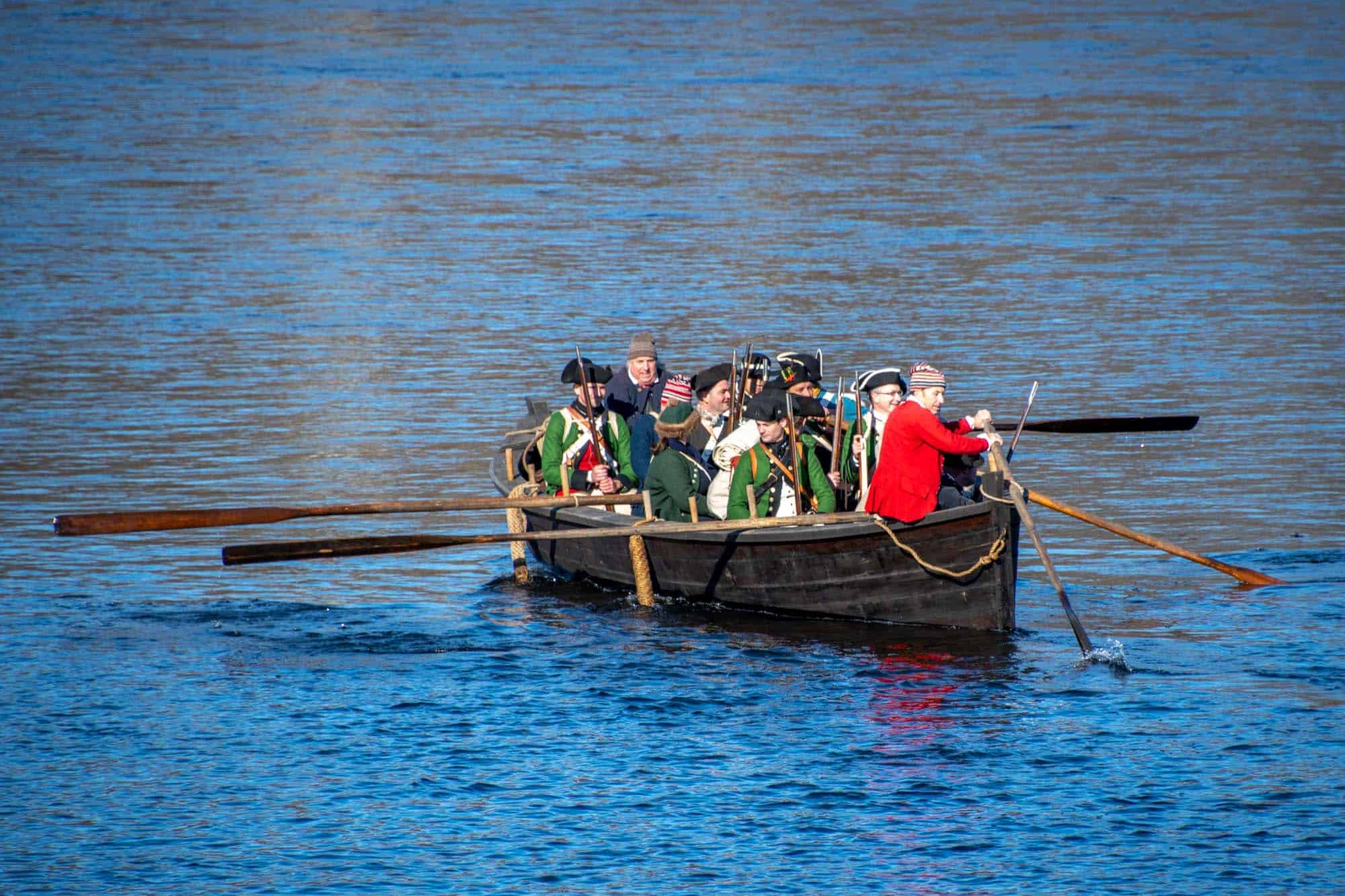
While the Christmas Day crossing is the most well-known, there are actually two opportunities to see the reenactors make their way across the Delaware River.
Each year on a Sunday in mid-December, Washington Crossing Historic Park hosts the first crossing. This event is a rehearsal for the one that happens roughly two weeks later. While the Christmas crossing is free to attend, the first crossing has a fee. The cost is $9 for adults and $5 for children (ages 5-11), and there is a family rate of $25 that covers admission for two adults and two children.
This year’s first crossing is on December 10, 2023.
The reenactors are committed to authenticity
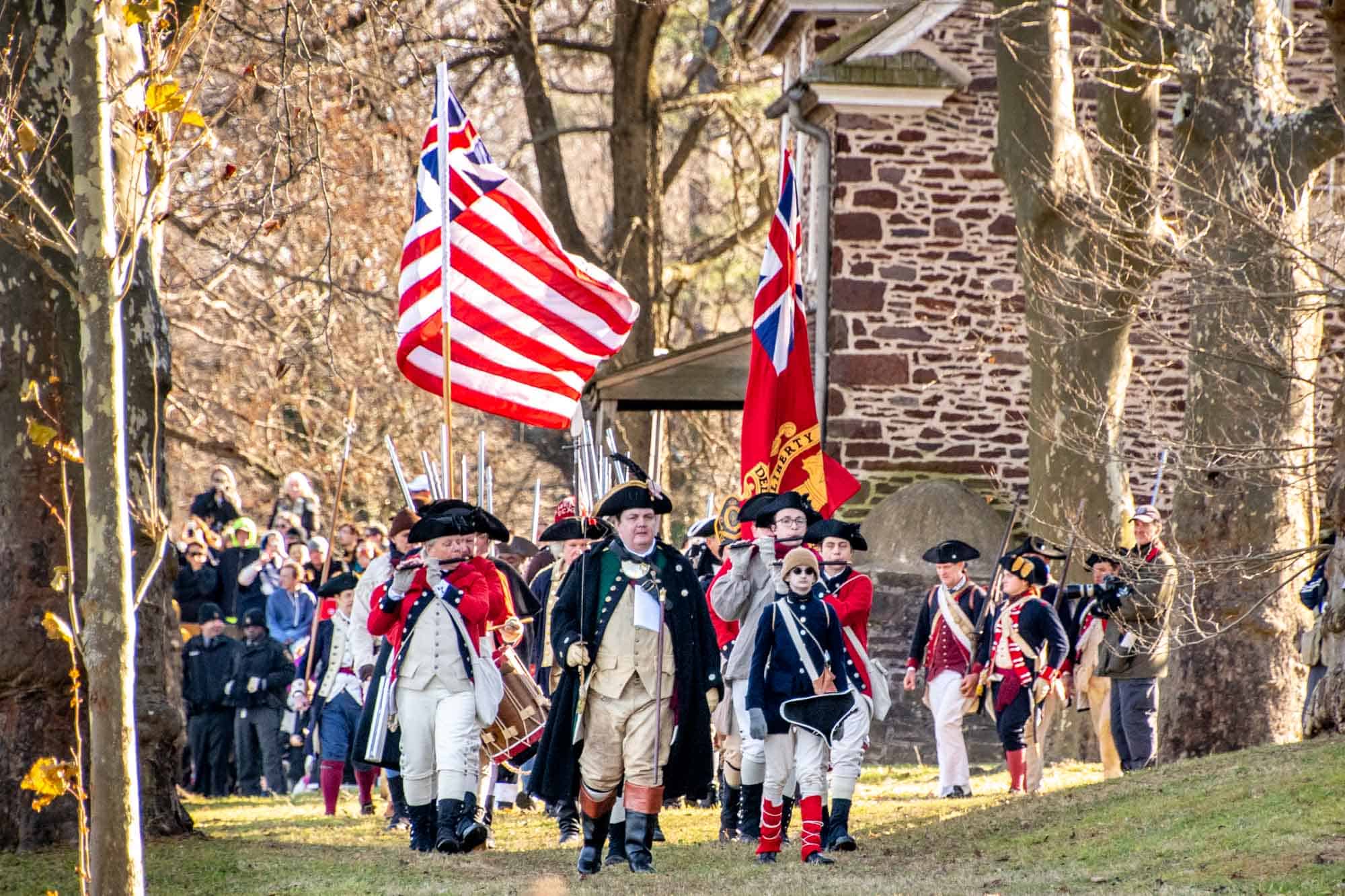
Hundreds of volunteers from around the Mid-Atlantic and beyond don their Colonial-era best to participate in the crossings and related events. The soldiers, officers, and others adhere to a long list of standards to ensure that their clothes and accessories accurately reflect the time.
By the time they reached Christmas of 1776, many of the infantrymen had been fighting for a year, and their uniforms showed the wear. Despite being a little rough around the edges, you’ll see lots of hand-stitched shirts, fine neckerchiefs, and smart waistcoats with differences based on the state the troops represent. Women’s and children’s clothes reflect the fashions of Bucks County in the 1770s, and there are many families who participate as reenactors together, although women and children would not have been present at the actual crossing.
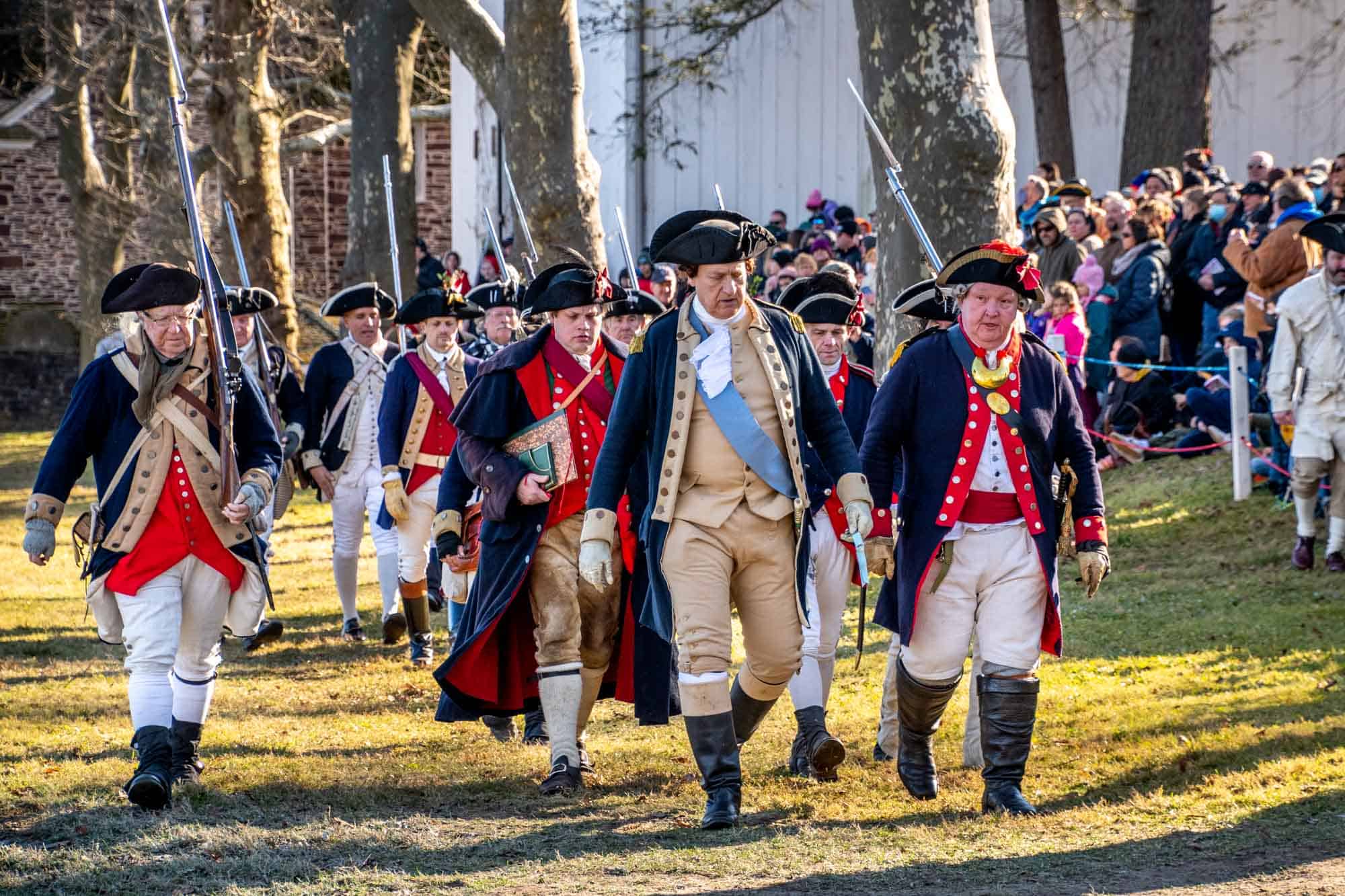
Beyond the requirements for the crossing, the people who volunteer their time as part of living history events like this tend to be passionate and knowledgeable about the people they portray. Most are happy to chat with visitors about their regiment, the battles, the conditions the troops faced in the winter of 1776, and every detail of their costumes and regalia. Take a minute to talk with them if you are curious–it’s one of the aspects of the event that we find the most interesting.
Concessions are limited
Both events take place during lunchtime hours—11am-3pm for the first crossing, and 12pm-3pm for the Christmas Day reenactment—but options for food and drink are limited.
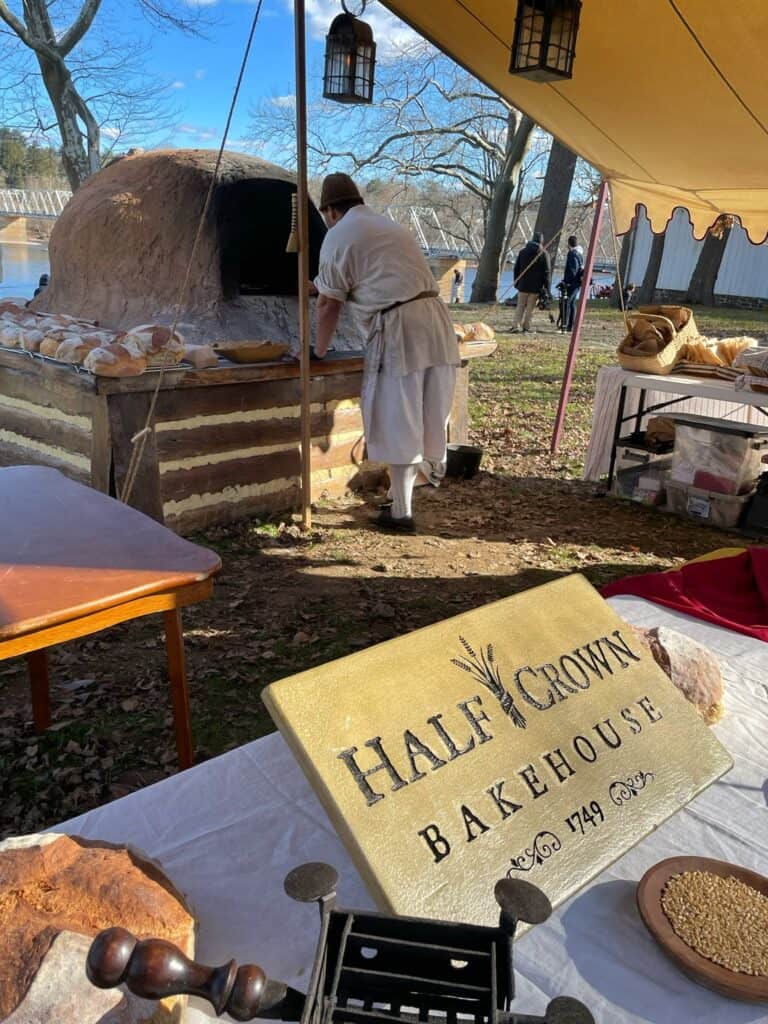
On December 10, visitors can enjoy fresh bread made on-site by Half Crown Bakehouse. They use local ingredients that are authentic to the Revolutionary time period, so watching the bread come fresh from the clay oven is both delicious and educational. A selection of drinks is also available.
No food and drinks are available on Christmas Day, so come prepared.
There are other activities to enjoy
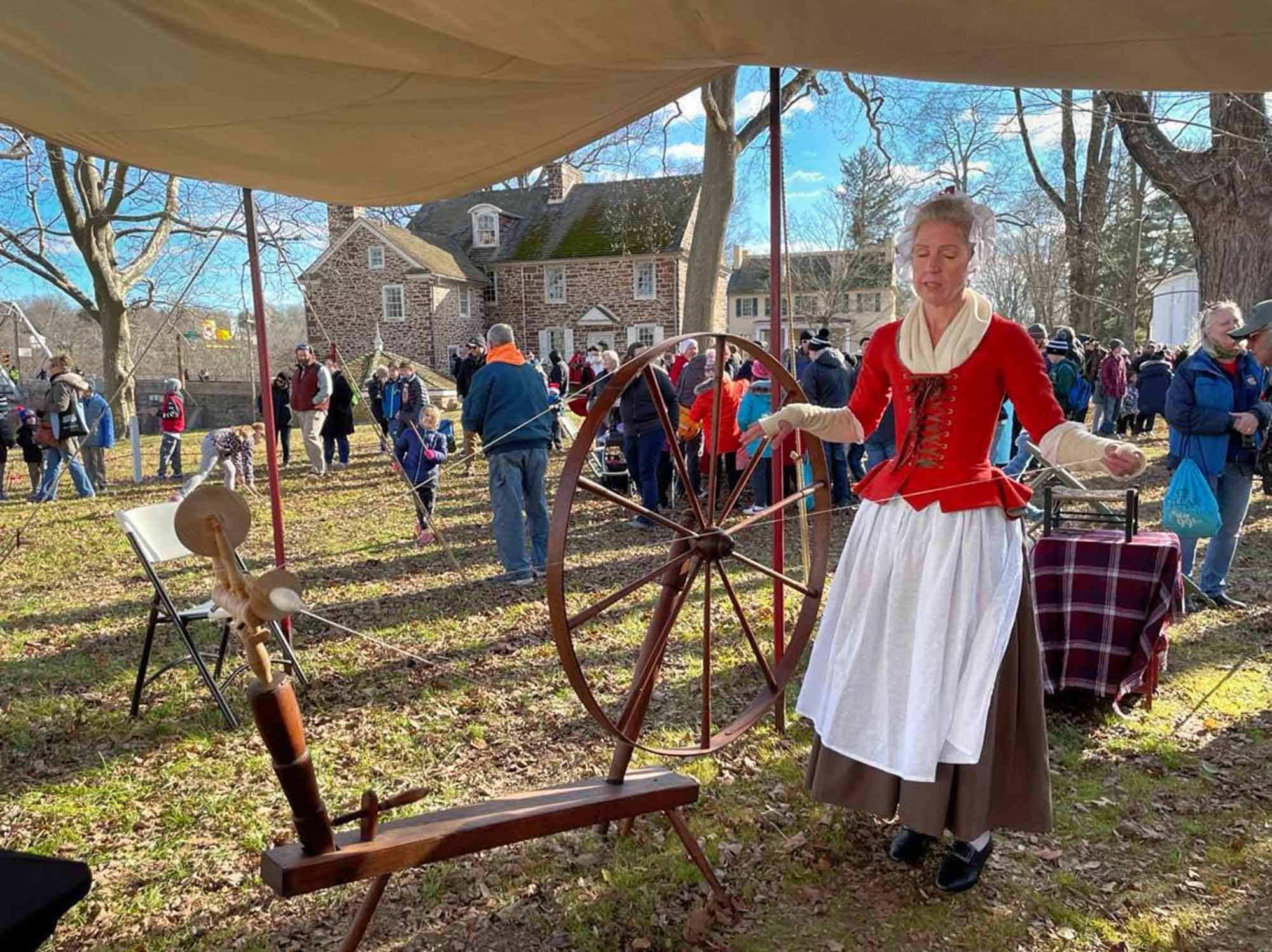
The first crossing is family-friendly, and there are different activities for visitors of different ages. Seeing all the reenactors engaged in their tasks and preparing for a successful crossing is one of the highlights of the winter season.
Living history participants demonstrate tasks from the Revolutionary era from spinning and weaving to carpentry and more. You may see musicians, volunteers who have set up camps, or the military doctor talking about how he treats the troops.
There may also be a chance to get an up-close look at one of the Durham boats—the type of vessel used by Washington and his troops. The flat-bottom boats are over 40 feet long and weight over two tons, even when empty. The event’s emcee and George Washington make speeches.
At the Christmas Day crossing, visitors can expect to see the troops march along the river and Washington deliver his speech.
The events are popular
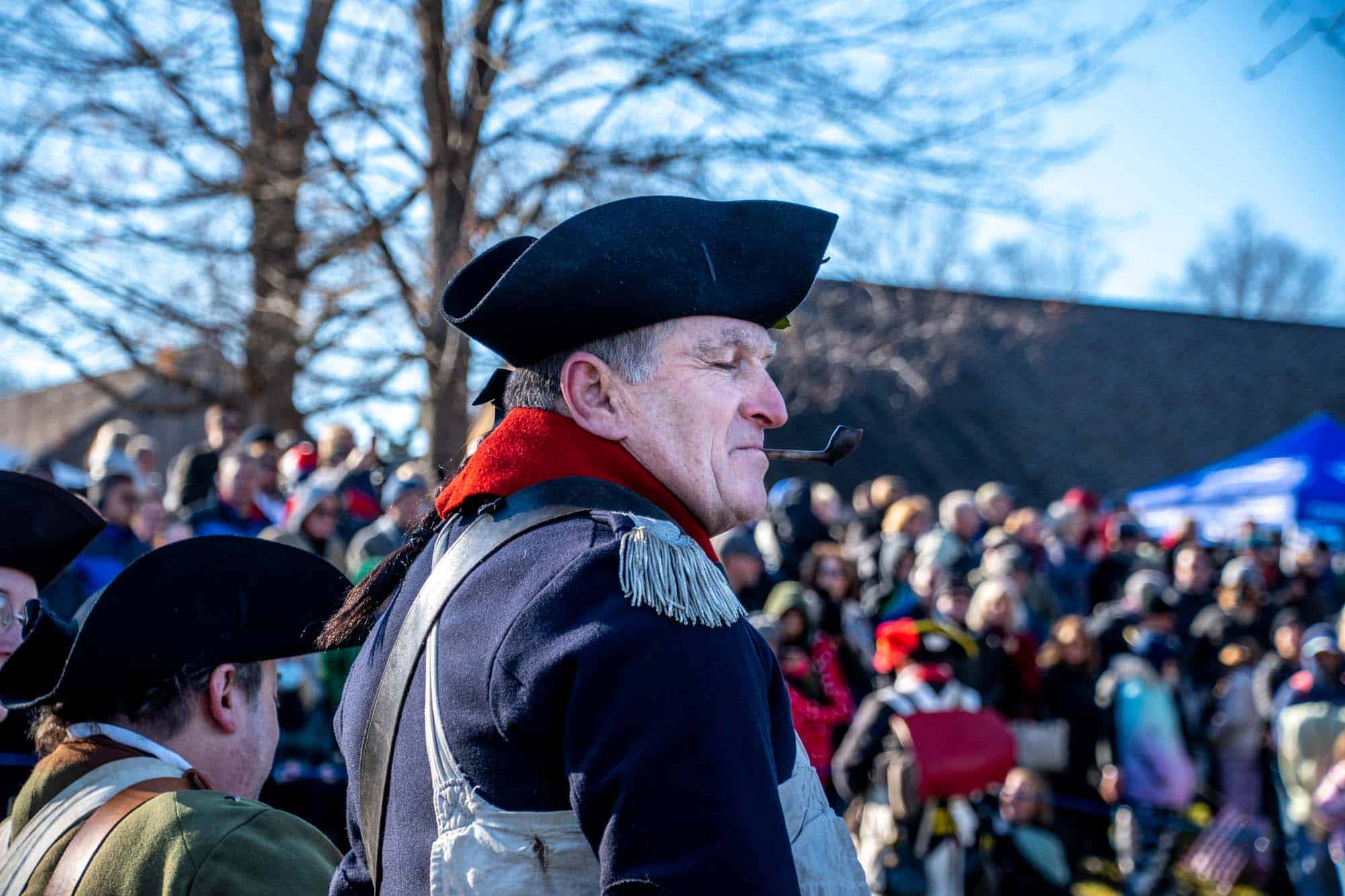
Between the two crossings, about 10,000 people participate each year. That means it can get a bit crowded. Planning ahead will likely help your group have a more enjoyable time.
The actual river crossing begins at 1pm, though arriving earlier may help you get a better viewing spot and ensure that you have plenty of time to park and walk to the event site. Parking is clearly marked. If it has been rainy or snowy, the walking paths may be muddy, so sturdy shoes are advisable.
The crossing is weather dependent
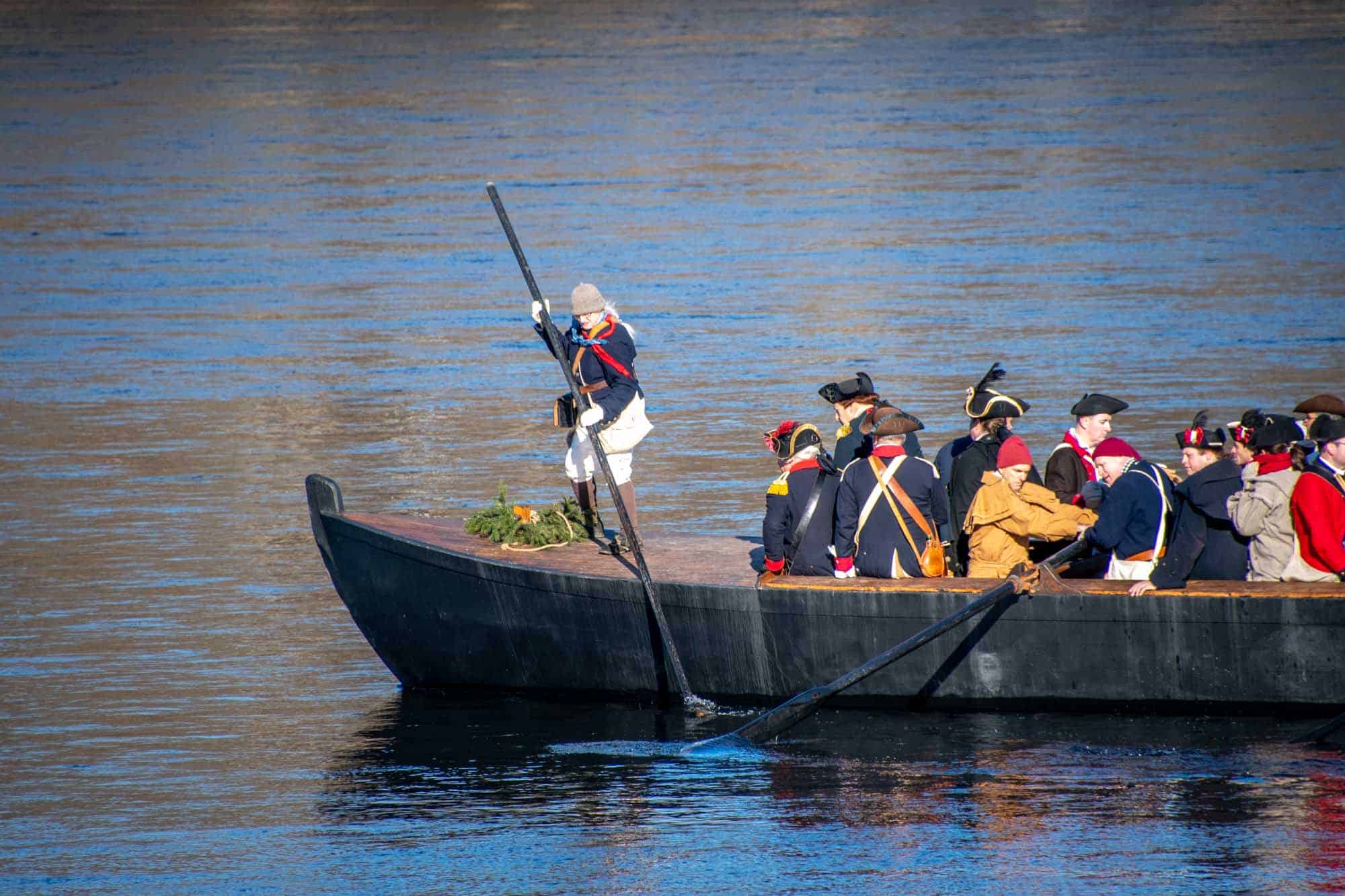
The waters of the Delaware River can be quite difficult to navigate, which is one reason the 1776 crossing was remarkable. In fact, the famous painting by Emanuel Leutze—Washington Crossing the Delaware—depicts lots of ice chunks floating by.
Christmas Day can be snowy and treacherous with high waters or 40°, sunny, and calm. As a result, the crossing can’t be guaranteed. But, even if it’s not safe to physically cross the river, reenactors are there to march and meet visitors.
